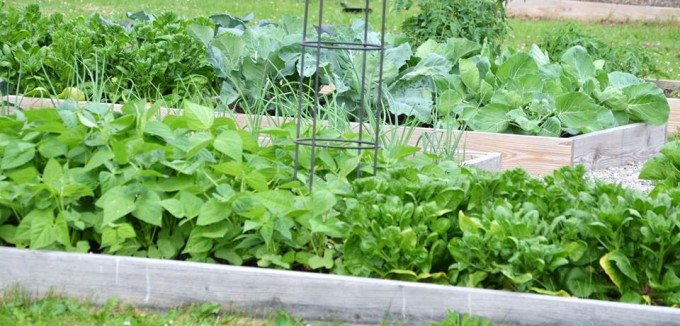
I was teaching a Mental Health First Aid certification course, this weekend, when I got into a lunch conversation about gardening and canning fruits and vegetables. One of the participants was an avid gardener who told me that she was often chastized for the work it took to create and maintain a garden and can your own food. Other people at the table were also gardeners (on a smaller level), and the conversation turned positive. They indicated that they have noticed that in today’s world, gardening is making a comeback for many reasons. Then, I was asked, “Why did you start gardening?”
Well, I come from a large family where I was the oldest of my siblings. My mother had a small garden, and I was the only one mesmerized, from an early age, with the idea that we can work this piece of dirt, plant a seed or two, and somethng amazing grows. From that plant, we can be nourished. During my youth, as I heard the biblical stories of Creation, I automatically equated Mom’s little garden to how God created man in a garden. Since then, I have always tended a garden of some semblence.
I guess you can call my garden, “My Happy Place.” It’s my stress reliever, my exercise, my place of silence and peace, my shared experience with my family and friends who have become part of our family, and my place of shared creation. It is my outdoor place where I can be still and pray or meditate or just breathe and listen to the sounds around me. We also use the garden as the backdrop for outdoor activities and gatherings and as a place to teach others about growth, health, food, and canning. As the space develops into something more and more beautiful, we will use it for more… or less… depending on what our needs or calling might be.
To me, my garden depicts life in all of its beauty. It has strengths and weaknesses which are influenced by the environment and the people it encounters. My gardens have experienced some disasters (like last year’s wide-spread blossom-end rot) which have taught me some resiliency skills, as well as some patience. Each time, though, the garden and I have bounced back and remained alive and kicking. Overall, like life, the garden provides many more positive things than negative, and it always bounces back to being a productive life. It symbolizes the life cycle and how, if nurtured, a life can and will thrive. My gardens give me more than plants and food: My gardens provide feelings of hope and faith, and well…
…isn’t that everything?


 While I am particularly interested in tomatoes, since this is the only plant I am experiencing blossom end rot, I am finding that only one variety of tomato that I planted is having the problem, the Big Mama hybrid. I planted both Big Mama (photo on the left) and Super Sauce (photo on the right) hybrid tomatoes from seed, this year. I planted the seed directly in the ground as soon as the soil was warm enough.
While I am particularly interested in tomatoes, since this is the only plant I am experiencing blossom end rot, I am finding that only one variety of tomato that I planted is having the problem, the Big Mama hybrid. I planted both Big Mama (photo on the left) and Super Sauce (photo on the right) hybrid tomatoes from seed, this year. I planted the seed directly in the ground as soon as the soil was warm enough.  I also bought German Lady, Rutgers, Lemon Boy, and Jet Star tomato plants, and have a few Roma and Cherry ROGUE (volunteer) plants, all of which are producing fruit with no problem with blossom end rot. Last year, I bought Super Sauce plants from Burpee Gardening, and they were, not only tasty tomatoes, but extra-large and with very little extra water and few seeds, so they are easy to use and provide little waste, with less effort, to make sauce and salsa. Super Sauce are heavy producing plants and do well in the Indiana climates. I decided to try the Big Mama tomatoes based on reviews of people who liked the Super Sauce, since it also produces extra large Roma-style fruits. So far, the Big Mama plants seem to be loaded with tomatoes, but I have lost dozens of them them to the blossom end rot.
I also bought German Lady, Rutgers, Lemon Boy, and Jet Star tomato plants, and have a few Roma and Cherry ROGUE (volunteer) plants, all of which are producing fruit with no problem with blossom end rot. Last year, I bought Super Sauce plants from Burpee Gardening, and they were, not only tasty tomatoes, but extra-large and with very little extra water and few seeds, so they are easy to use and provide little waste, with less effort, to make sauce and salsa. Super Sauce are heavy producing plants and do well in the Indiana climates. I decided to try the Big Mama tomatoes based on reviews of people who liked the Super Sauce, since it also produces extra large Roma-style fruits. So far, the Big Mama plants seem to be loaded with tomatoes, but I have lost dozens of them them to the blossom end rot.